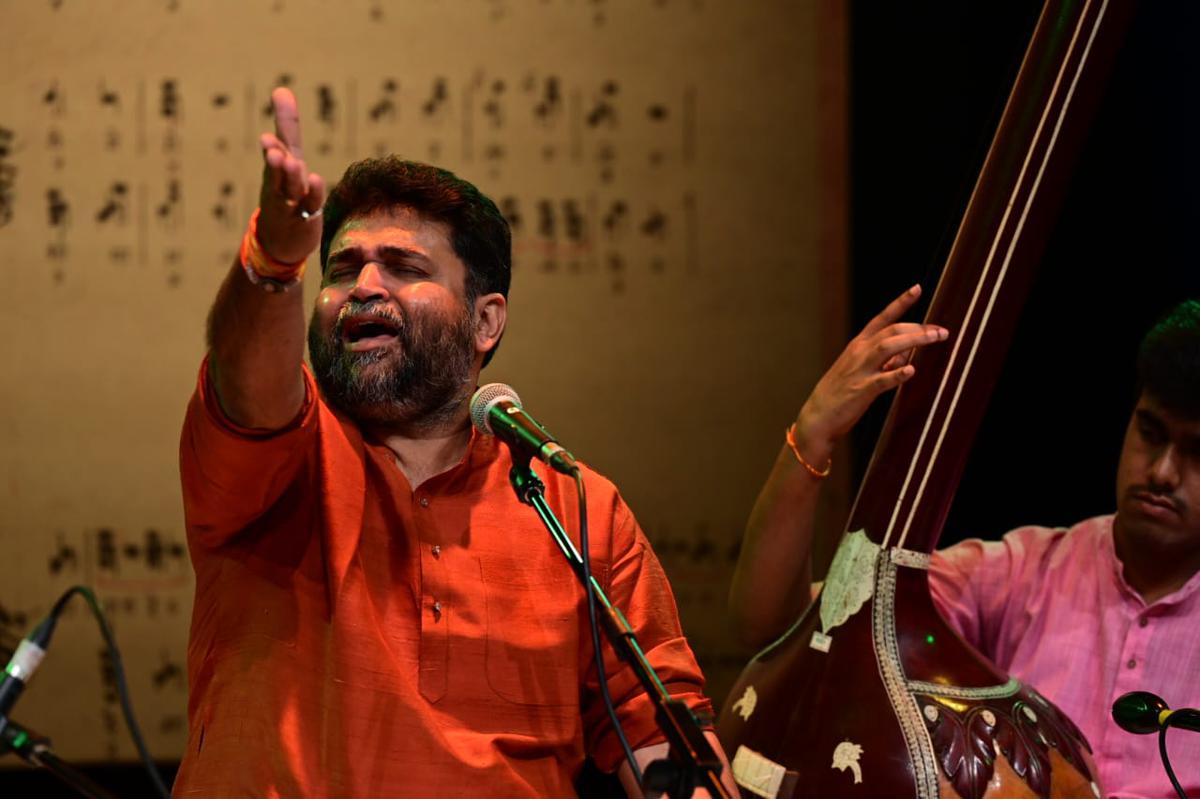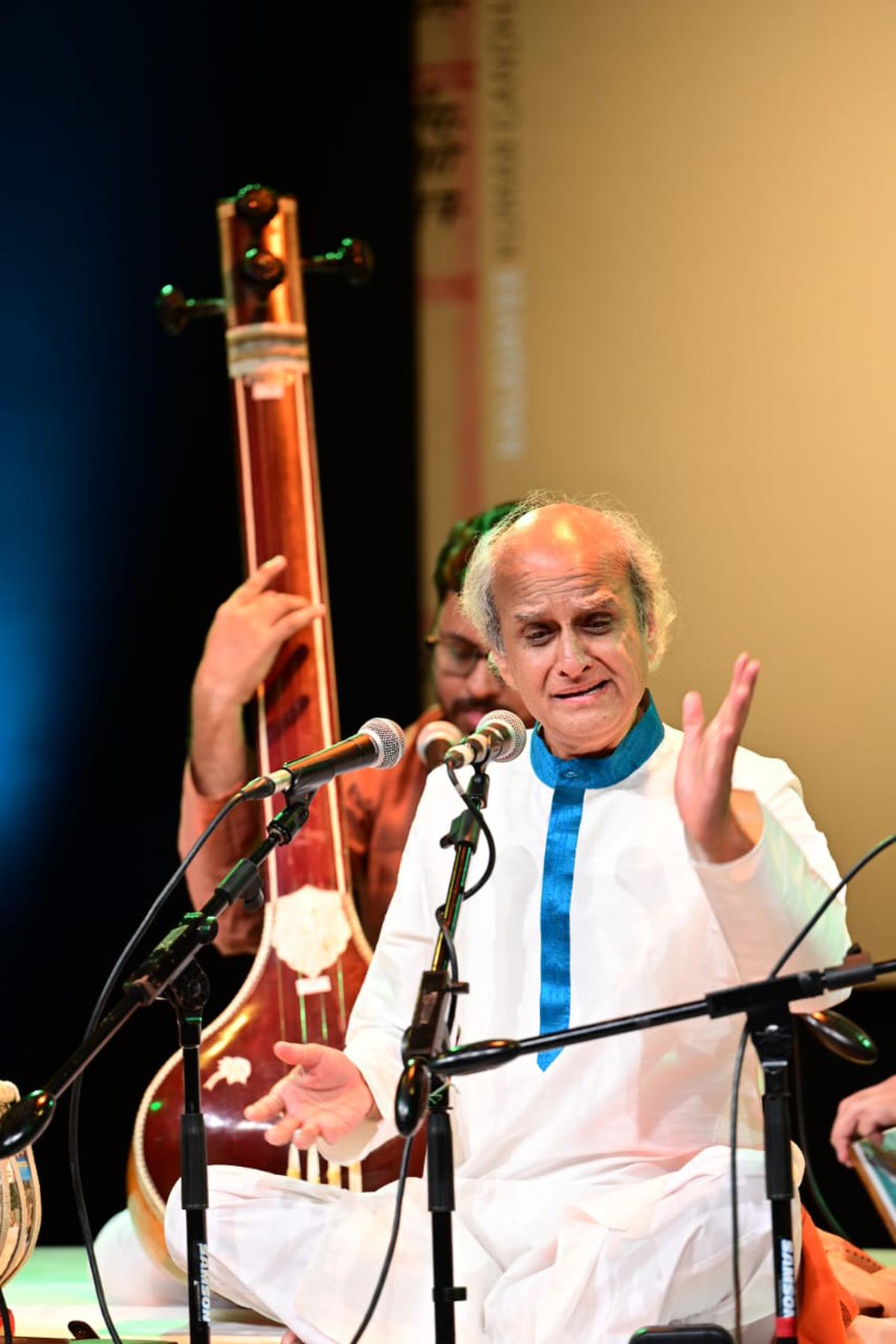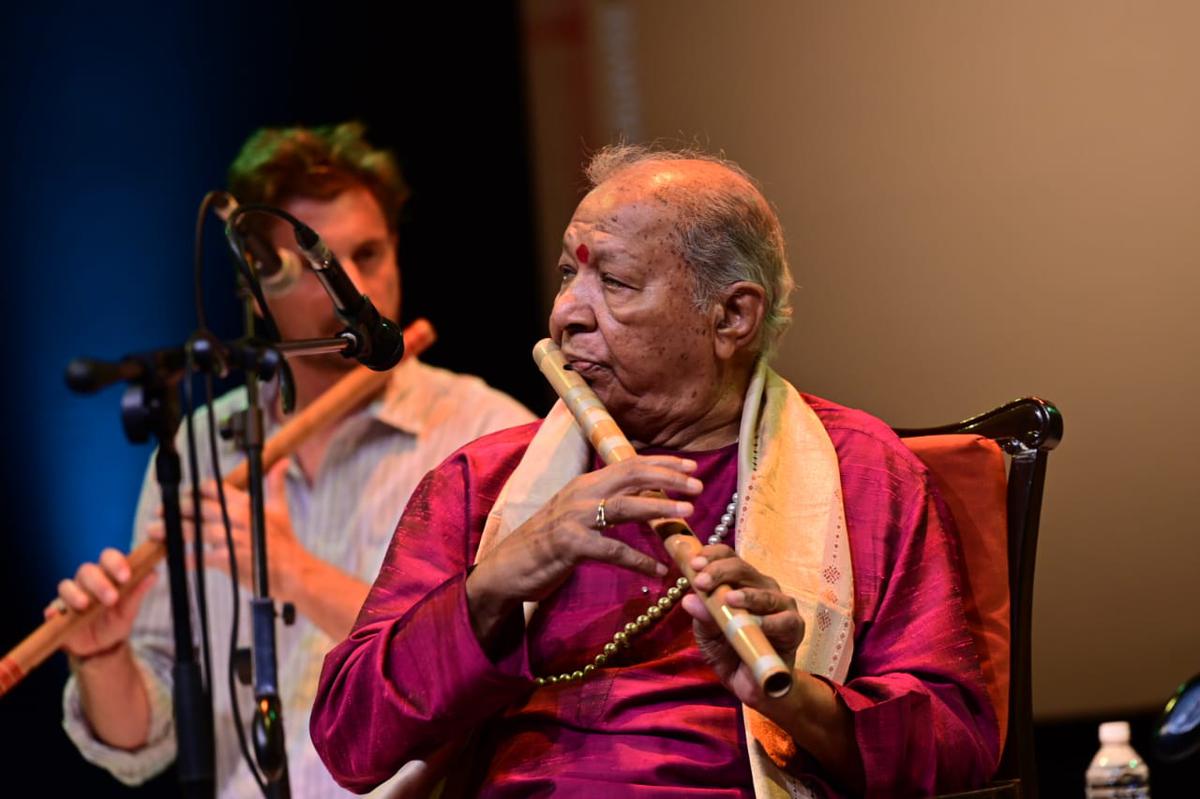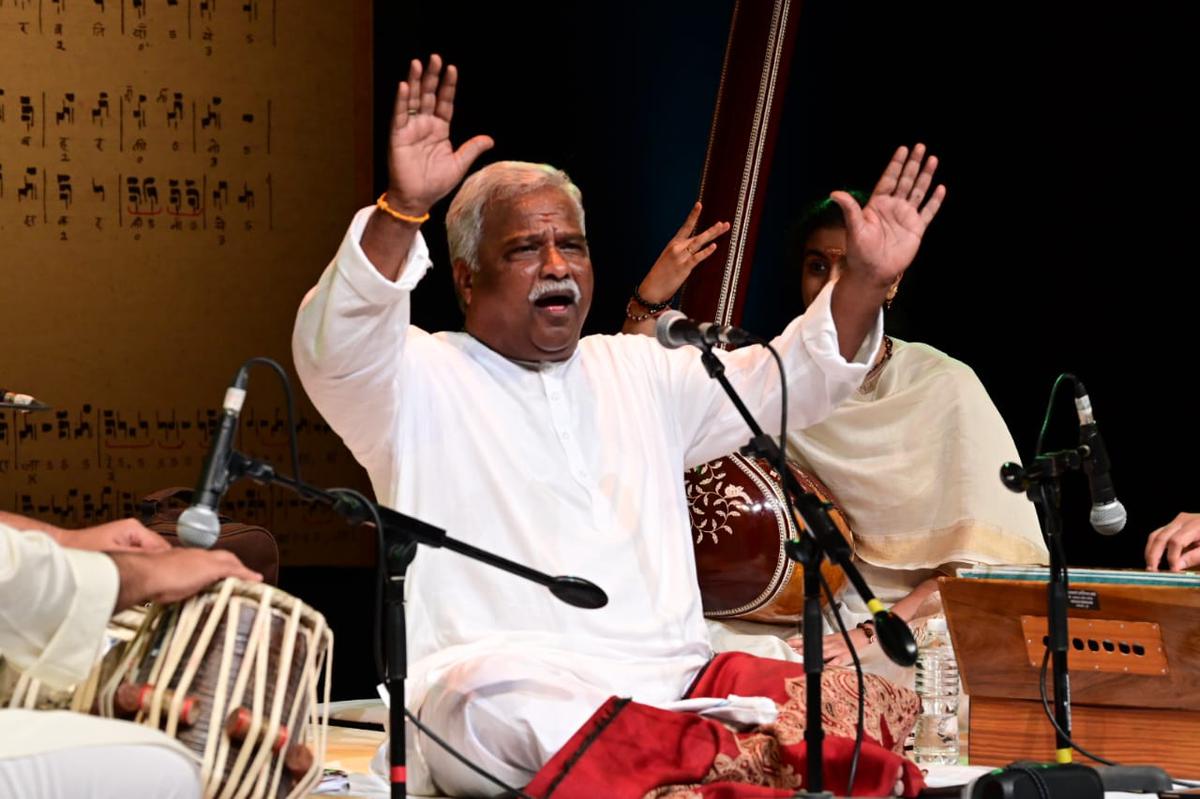The Tata Theater at the National Center of Performing Arts (NCPA), Mumbai was packed with people who attended Pt. Had come to celebrate. Kumar Gandharva Birth Centenary. This momentous occasion was marked with the inauguration of ‘Kaljayi’, a year-long, multi-city festival. It began with a two-day festival at NCPA organized by Kumar Gandharva Pratishthan Dev and supported by Pancham Nishad and Ministry of Culture.
Ashok Vajpayee | Photo Credit: Special Arrangement
The first thing that caught the attention was the aesthetic decor of the stage, with hints of the maestro’s composition in Raag Saheli Todi in the background. The program was inaugurated by 93-year-old Shirish Patel, a friend of Kumar Gandharva. On the occasion, Vinay Sahasrabuddhe, Director General of the Indian Council for Cultural Relations (ICCR), announced that there are plans to hold an international symposium on Kumar Gandharva. Ashok Vajpayee recited a poem from his book daughter-in-law alone, Written on PT. Kumar Gandharv. he also launched And the house is the most beautiful: life story, Biography of the great singer published by Raza Foundation.

Bhuvanesh Komkali | Photo Credit: Special Arrangement
The festival started with the performance of Bhuvanesh Mukul Komkali. Son of Mukul Shivputra and grandson of Pt. Kumar Gandharva, Bhuvanesh were trained by Vasundhara Komkali and Madhup Mudgal.
Bhuvanesh started his concert with ‘Is Jag Mein Tum Bin Kaun…’ in Raga Bhimpalasi with accent on its chord note, ‘Madhyam’. Traditionally a raga begins with a ‘shadja’, which forms the foundation on which the raga is built. Presenting the composition set to the medium tempo of Rupak Taal, Bhuvanesh treats the raga carefully and continues with a three talo tarana in the same raga. Shree-Kalyan, created by Kumar-ji, came across as an exemplary contrast, combining Shree’s romantic experience of compassion and welfare. The bandish ‘Dekho Ri Ruta Phoolan Lagi…’ depicts Basant interspersed with the taan during the raga expansion. This set the tone for ‘Piharwa Aao Tum’, a mid tempo three tal bandish in Yemen, which was addressed as ‘Kalyan’ by the late maestro. Prashant Pandav on Tabla and Niranjan Lele on Harmonium gave full support.

Ulhas Kashalkar | Photo Credit: Special Arrangement
The evening of the second day began with Kalapini Komkali’s Lagan Gandhar, a unique raga composed by her father Kumar Gandharva. It contained not only both ‘Gandhara’ and ‘Nishada’, but also a third shruti between pure and soft Gandhara which the maestro saw as ‘Komala Gandhara’. This added a personal dimension to the vibrancy of the raga. He had demonstrated this aspect of the raga to his friend Pandhari Nath while composing the raga. He had said, “It has the passion of Gandhar”, hence the name Lagaan-Gandhar.
Kalapini presented two compositions in this challenging raga – ‘Sudh Na Rahi’ in a delayed one taal and ‘Baje Re Mora Jhanjharawa’ in a madhya (medium tempo) three taal.
His next performance was Kedar-Nand, a jod-raag popularized by his father. He began with an alap in Kedar which merged seamlessly into Nanda. Kalapini composed ‘La De Beera Mharo Dhani Chunari’ followed by his famous bandish ‘Ab To Aa Ja Re’ in Nanda before concluding with Kabir Bani and a bhajan.
Another important segment of the festival was the morning session of talks with Satyasheel Deshpande, Shruti Sadolikar, Ashok Bajpai and Shama Bhate, who had a close association with Kumar Gandharva. Moderated by Shashi Vyas, session three highlights the contribution of the maestro to the world of music. The panellists also shared their experiences. Shruti Sadolikar recounts how Kumarji’s rendition of Nath Na Majha, with the very first taan of ‘na’, brought out Rukmini’s emotions.
Shama Bhate spoke about how her vocals and rhythm inspired her to think and express herself creatively through dance. Ashok Vajpayee reiterated that Kumar had faith in Gandharva’s tradition but did not blindly follow it. He used to say, music is not repetition, but to express your thoughts and feelings in new ways. “There is no frequency in music, there is embodiment!”
Satyasheel Deshpande talks about the ‘sense of wonder’ that made Kumar Gandharva’s singing stand out. She performed Todi Bandish ‘Ab Mor Ram’ sung in Agra Gharana and then demonstrated the way the maestro sang. Satyasheel told how Kumar Gandharva felt that the ‘aggressive ‘ba’ had hurt the essence of the composition. “Saying ‘b’ like this will hurt the soul of the todi.” It was the most prosperous season.

Hariprasad Chaurasia | Photo Credit: Special Arrangement
In the festival Pt. Presented by Hari Prasad Chaurasia. He was accompanied by Ojas Aadhya on tabla. The veteran flute player played the raga Maru Bihaag and the Peelu tune ‘Dheere Se Aaj Ri Ankhiyan Mein, Nindiya Aaja Ri Aaja’ along with his students.
Niladri Kumar played soulful alap-joints in Raag Shuddha-Kalyan on Surbahar before playing a medium tempo three-tal gat on sitar. After this there was another Ghat in Hamir. Satyajit Talwalkar’s melodious tabla accompaniment added grace to Neeladri’s performance. The only wish was that he refrained from adding unnecessary frills to the performance.

Venkatesh Kumar | Photo Credit: Special Arrangement
By Kausi Kanhara & Sohini Pt. Accompanied by Ulhas Kashalkar on Tabla, Pt. Suresh Talwalkar and Suyog Kundalkar on Harmonium, the inauguration was another highlight of the evening. The festival concluded with Pt. Venkatesh Kumar’s lively Shankara was followed by a Viparita Basant, a Kannada vachan and the popular Bhairavi Thumri ‘Ras Ke Bhare Tore Nain’.